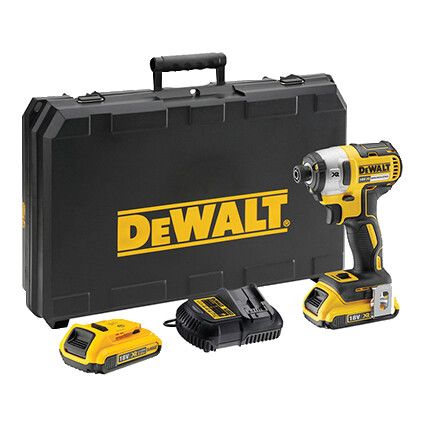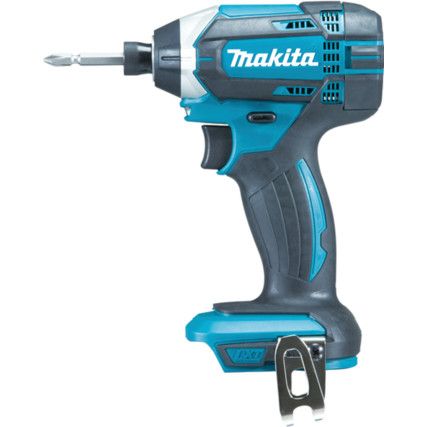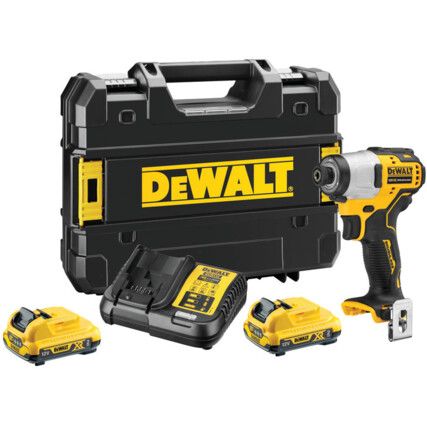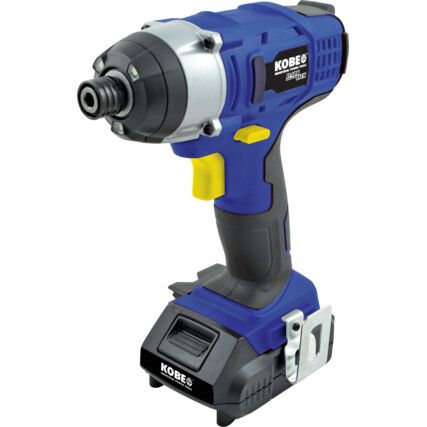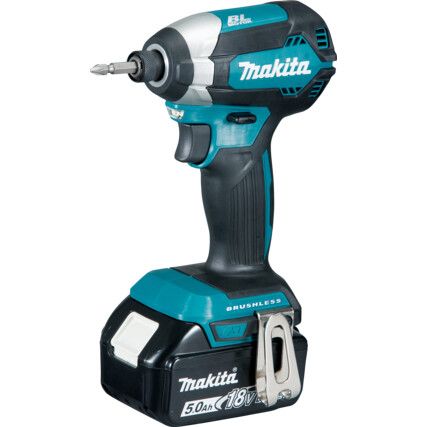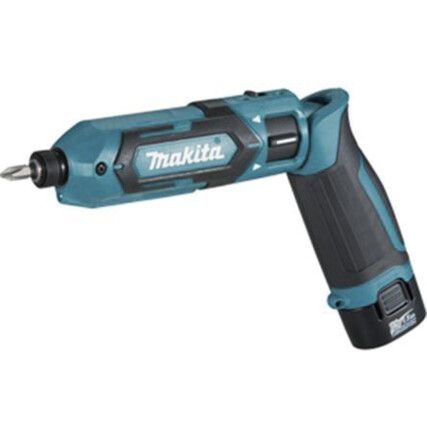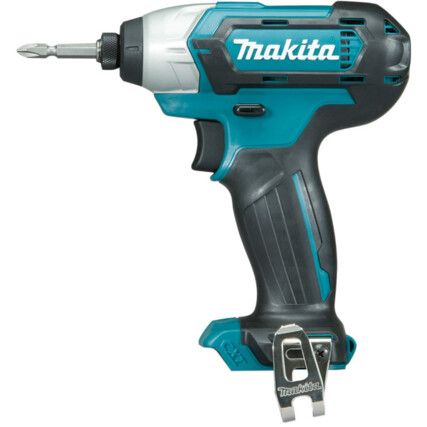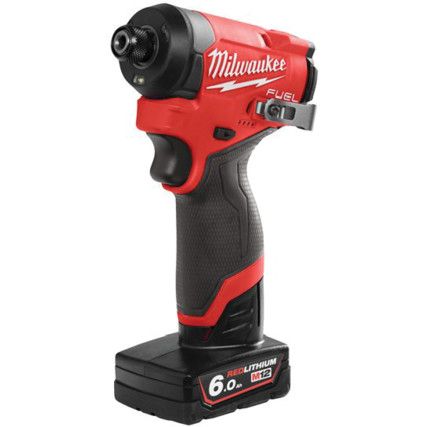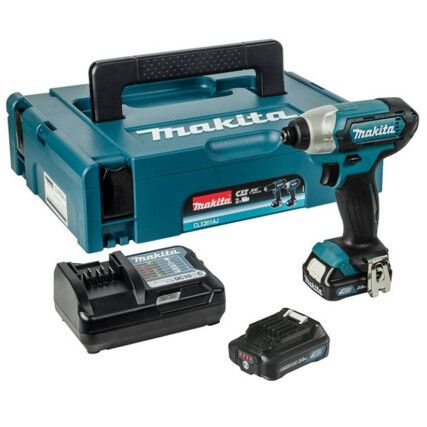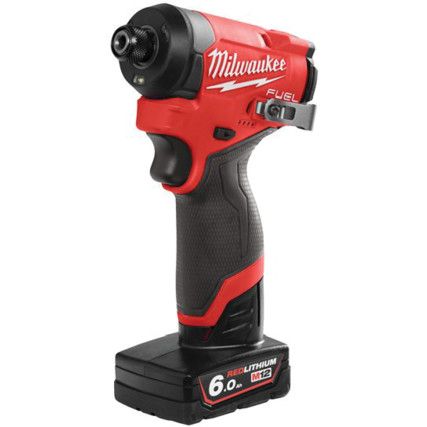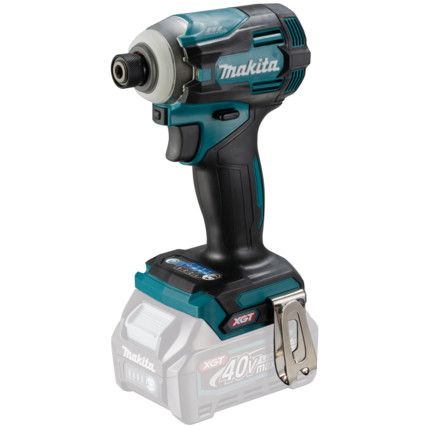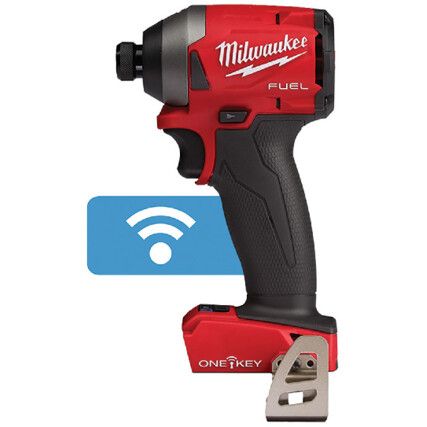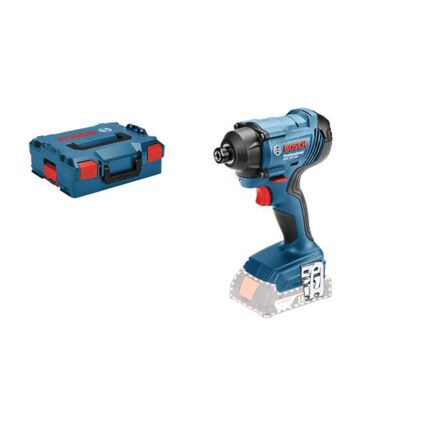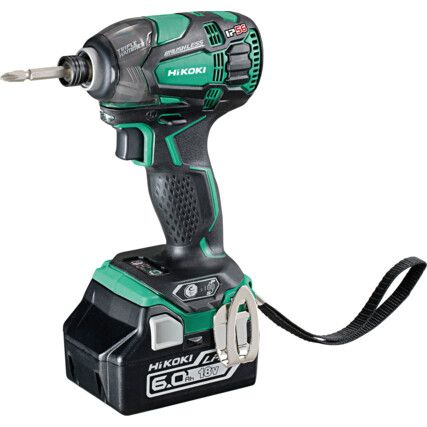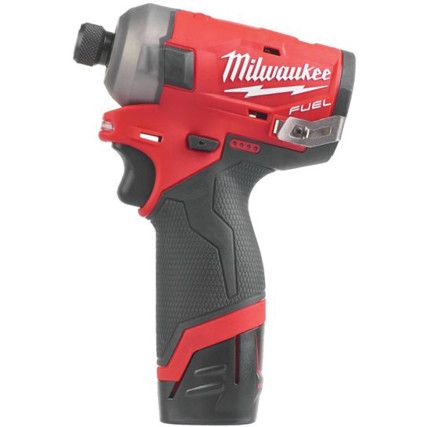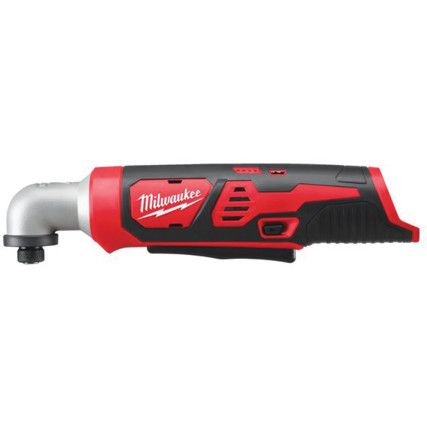Impact Drivers
The impact driver combines power and portability for quick and easy fastening. They're designed to provide high-impact, high-torque usability no matter the situation or location, aided by a light and ergonomic design for effortless all-day usage. Cromwell stocks a wide range of impact drivers, from trusted brands such as Bosch®, Makita®, Chicago Pneumatic®, DeWalt® and many more.
What are impact drivers?
Impact drivers look and function much like a traditional cordless drill - but don't be fooled. Impact drivers pack considerably more punch, thanks to far greater rotational torque. The ultimate boon of the impact driver is how much extra working force is achieved over a standard drill. This is thanks to a spring, hammer and anvil mechanism that 'hits' the fastener, providing a powerful jolt to effectively drive it in. Most impact drivers hit at over 60 times a second, creating an enormous amount of usable force for a tool of this size. A good way to differentiate impact drivers from regular drills is this; a normal drill simply pushes the screw, putting excess strain on the screw cut-out that often results in warping or stripping. An impact driver rapidly 'punches' the screw, delivering a much greater downward force with far less damage to the screw or fastener.
Why an impact driver?
Impact drivers make inserting and removing fasteners exceptionally safe, simple, and speedy. With the correct attachments, they can even drill holes in a pinch. Compared to other tools of its type - such as combi drills and drill drivers - the impact driver is known for producing far greater torque. This makes them particularly suitable for work on tough materials, and driving large, stubborn screws without causing excess damage or wear. Often described as 'the ultimate fastening tool', impact drivers utilise a ¼'' hex chuck size to grip smaller bits and attachments without hassle. Impact drivers make use of their incredibly high torque to remove the stress from the operator and minimise the risk of stripping or damaging screws. As such, they provide the most efficient way to drive in a screw.
When are impact drivers used?
• Driving Long Screws or Bolts - Even with pre-drilled holes, standard drills often struggle when driving longer screws or bolts, especially those that are three inches or longer. Impact drivers excel at driving those longer screws and fasteners, even into dense or knotted materials.
• Removing Fasteners - What makes impact drivers excellent at fastening also makes them highly effective at unfastening. Impact drivers are often used for removing tight, stubborn screws and fasteners without causing damage.
• Drilling - Impact drivers are, as the name suggests, designed for driving over drilling. Yet if you have the correct drill bit, impact drivers make capable drills. You won't want to throw out your dedicated drill anytime soon - the hammering motion of an impact drill doesn't result in smooth drilling. However, if you're looking to drill a hole in some wood or light metal, the impact driver has your back in a pinch. If you're looking for the ideal tool for your job, feel free to ask our experts for specialised advice.
Impact driver types
Impact drivers are one thing, but when you've also got hammer drills, impact wrenches and air wrenches to contend with, it can be hard to know which tool is the right choice. Let's clear up some of the confusion:
• **Impact driver** - Uses a ¼ inch hex collet for smaller bits. Utilises a hammering motion to quickly drive in screws or fasteners. Designed for use when working with fasteners that require a driver bit to effectively tighten or remove.
• **Hammer drill** - Similar in design to an impact driver, but different in how force is delivered. Impact drivers increase the force perpendicular to the bit, whereas hammer drills deliver their force directly through the bit - more akin to how a jackhammer works. Designed for heavy-duty drilling, rather than driving.
• **Impact wrench** - Functionally very similar to the impact driver but uses a square drive that a socket can be attached to. Designed for use when working with hex-head fasteners, such as heavy-duty nuts and bolts.
• **Air wrench** - Similar to a standard impact wrench but powered by compressed air. Typically suited to stationary work due to the inconvenience of a bulky air compressor.
## Considerations when choosing an impact driver
• **Voltage** - Impact drivers come with a range of available power ratings, the prominent two being 12V and 18V. Voltage affects torque, meaning 18V drivers are more powerful - however this comes at a slight increase in both cost and bulk.
• **Corded vs. cordless** - This essentially comes down to weight vs. practicality. Cordless impact drivers can be bulkier thanks to heavy battery packs, but are much easier to manoeuvre and transport thanks to a lack of wires.
• **Handling and control** - 18V models are of course more powerful, yet 12V models are smaller and lighter - allowing for easier access for work in awkward places.
## Impact driver jargon buster
We want to make it easy for you, so here are some key terms that will help you understand the range and applications a little better.
*Brushless motor*
Nowadays, many impact drivers have brushless motors. Brushless motors provide greater energy efficiency, resulting in increased runtime per charge and consistent power delivery no matter the battery level. The downside is that they are more expensive to design and implement, so it may be hard to get a brushless model on a tight budget.
*Impact rated accessories*
Standard drill bits are often not designed to withstand the stress placed on them by an impact driver.
When buying attachments, always ensure they are 'impact rated' for peace of mind. They usually come in a darker grey or black finish to signify their extra strength.
*Oil pulse mechanisms*
Those who live or work near construction sites understand most impact drivers are noisy. Many newer models utilise impact mechanisms with hydraulic fluid to reduce noise, although most professionals opt to use ear protection instead.
### FAQs
*Can you use an impact driver to remove screws?*
Impact drivers can help remove screws, as well as drive them. The same way they tighten fasteners can also be applied to quickly remove even the toughest screws.
*Will impact drivers drill into concrete?*
No - impact drivers excel at dealing with fasteners. Their hammering motion is likely to break concrete. For drilling concrete, the correct tool is typically a rotary hammer.
*Will an impact driver remove wheel nuts? *
It's generally not advised. An impact wrench would be a much better choice for wheel and lug nut fastening or removal.
